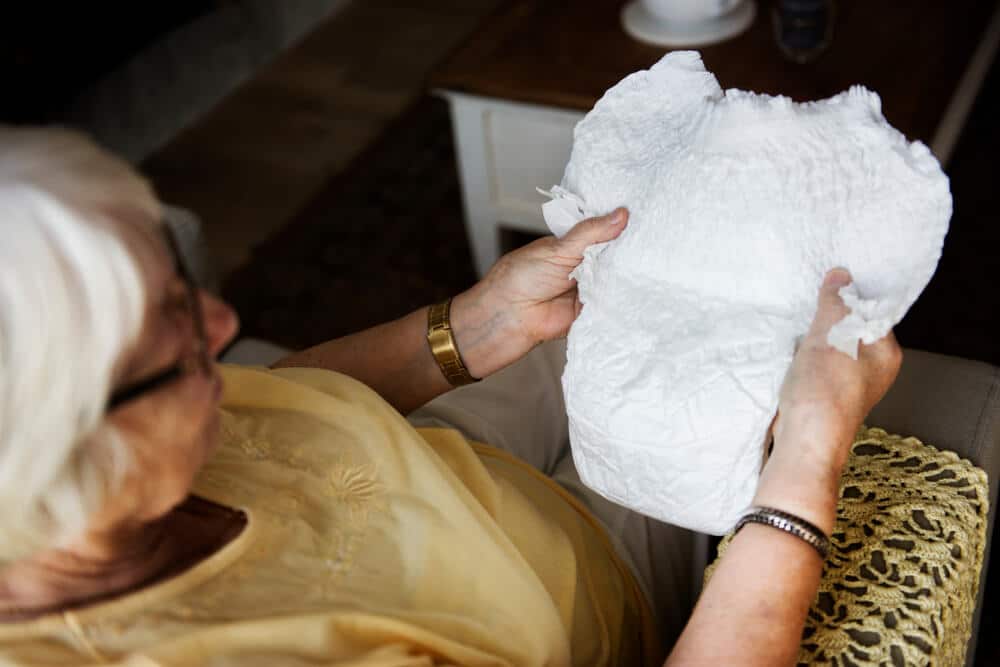MS or Multiple Sclerosis is a condition that affects the nerves, more specifically myelin, the coating that surrounds the nerve fibers. MS occurs when the coating gets damaged, producing various symptoms which usually differ from one patient to the next.
Because of the wide range of symptoms and the various ways MS can affect patients, some patients may also experience bladder control problems.
In this article, we’ll discuss the connection between MS and bladder issues, along with touching bases on bladder control medication and other potential treatment options that might help patients with their symptoms.
On that note, if you seek to learn more about the MonaLisa Touch treatment for urinary incontinence, feel free to reach out to us after reading the article.
MS Bladder Issues
In some cases, the nerve damage caused by the condition can interfere with the nerve signals that travel between the bladder, bowel, and brain. More specifically, the muscles that store urine and empty the bladder (the detrusor and the sphincter) can lose their coordination, leading to incontinence issues.
Not all MS bladder issues are the same. Patients usually experience them in various ways, including:
- Bladder problems sometimes present as urinary urgency or needing to pee rather often – feeling that tiny “tickling pressure” frequently and intensely that tells us it’s time to visit the restroom.
- Nocturnia, or the need to wake up several times during the night to visit the restroom.
- Urinary hesitancy, where patients experience problems when they want to start to pee.
- Lastly, incontinence, or the loss of fine bladder control; in some instances, Sclerosis Multiplex can disrupt the nerve signals that help oversee urine movement in the body, meaning pee might come out when the patient’s not ready for it.
Treating MS-Induced Incontinence
Bladder control problems aren’t just conditions that make life inconvenient. These issues will require timely treatment because incontinence can lead to more severe problems, like kideny damage, bladder infections, and other hygiene-related problems if left unaddressed. On the other hand, MS-related incontinence may also be mentally challenging because the condition may rob patients of living their everyday lives, leading them to feel isolated and left out.
On that note, before getting any type of bladder control medication, most patients will start their treatment with a doctor’s appointment, where their healthcare provider asks them how often they urinate. In some cases, patients may get referred to urologists but may also recommend a few dietary and lifestyle changes to combat the problem.

Diet Changes
Most often, experts will recommend changing the liquid patients drink daily. Doctors may recommend:
- Stop drinking fluids before going to bed (at least two hours)
- Lower or eliminate caffeinated drinks like tea, sodas, and coffee
- Aim to drink no more than two quarts of liquids daily
- Limit yourself to one alcoholic beverage daily
- Try to drink six to eight ounces of water every few hours
Changing Your Habits
You can also choose to change up a few habits, including:
- Timed voiding: This can help people who have difficulties going to the bathroom in time, for example, if they are dealing with a physical disability. Timed voiding is basically following a schedule for visiting the restroom at a set time.
- Prompted voiding: If patients have a caregiver, they will be responsible for reminding the patient to go to the restroom. Prompted voiding aims to avoid accidents by making patients aware that they need to visit the bathroom. The method’s often used in combination with timed voiding simultaneously.
- Bladder training: Also called bladder retraining, this method involves establishing a regular urination routine and training (retraining) the bladder to hold on. Usually, experts recommend starting bladder retraining by visiting the bathroom when the patient gets the urge and trying to hold on for at least a minute before actually sitting down. The main aim of bladder retraining is to help create better bladder control and increase the time between bathroom trips until they may last up for several hours.
- Kegel exercises: These little exercises can help strengthen the pelvic floor muscles, which can also aid in controlling your bladder.
- Staying away from tobacco: Nicotine is known to be able to irritate the bladder and increase the urge to urinate.
Products That Help With Bladder Control
Apart from voiding techniques and bowel retraining, patients can also use absorbent products that act like mini-shields attached to underwear. Also, there are plastic-backed diapers that can help patients against occasional accidents.
Most of these are disposable, but patients may also choose to get absorbent cloth materials that can be simply washed and reused.
On that note, these should be kept clean to avoid infections and other complications down the road.
Bladder Control Medication
In cases when lifestyle and dietary changes don’t yield any positive results, healthcare professionals may also choose to prescribe certain medicinal compounds that might help with better bladder control. In some cases, doctors will prescribe them while patients continue their bladder control training.
Essentially, these medicines help control muscle movements that push out the urine from the bladder. They include:
- Imipramine or Tofranil
- Darifenacin or Enablex
- Solifenacin or Vesicare
- Fesoterodine or Toviaz
- Tolterodine or Detrol
- Trospium or Sanctura
- Oxybutynin or Ditropan, Oxytrol transdermal patch, or Gelnique gel
Mechanical Bladder Control Aids
Often, experts will also recommend various devices to help improve bladder control. These ads may include:
- Catheters: The doctor may put this flexible, fine tube through the urethra into the bladder to help drain the urine completely. On that note, the doctor may also teach the patient the basics of intermittent self-catheterization. Patients who can’t empty their bladder completely may be advised to learn ISC or intermittent self-catheterization, which involves inserting a tube into the urethra and draining urine from the bladder. This must be performed cleanly to avoid bladder infections and other problems.
- External urethra barrier: This is a patch (self-adhesive) that patients may put over the opening where their urine leaves their body.
- Urethral insert: This is a flexible, thin, solid tube in the urethra to block urine leakage or flow.
Vaginal Rejuvenation
Radiofrequency skin tightening treatments like vaginal rejuvenation heat the tissues in the vagina, inducing collagen production and decreasing tissue laxity. While the treatment’s primary goal is to increase tightness and sensitivity, it may also help with incontinence.
Lastly, if nothing else helps, doctors may advise surgery as a last resort when nothing else seems to address the problem.

Find the Right Treatment Option With the Help of the Right Expert
MS-induced bladder control problems aren’t just an inconvenience. The condition requires adequate treatment, not just because of the difficulties patients may face but also because of the medical complications it may lead to. That’s why patients should find an experienced, compassionate, and caring expert with whom they can freely speak about their symptoms.
To help you find the best treatment method for incontinence, feel free to reach out to Dr. Krinsky.


